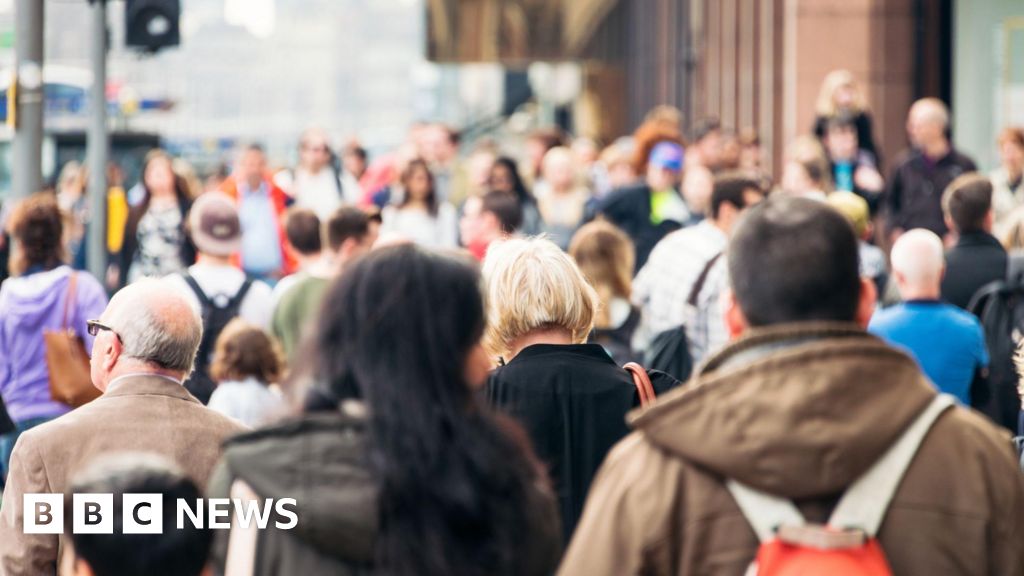Scotland’s population rising at fastest rate since 1940s

Scotland’s population rose faster than at any time since the 1940s in the year up to mid-2023, according to official data.
National Records of Scotland (NRS) figures put the country’s population at 5,490,100.
That was up 43,100 from the middle of 2022.
It represented a 0.8% increase on the previous year and was the biggest jump in one year since 1946-47.
The NRS said the main driver of population growth over the period was people moving to Scotland from other parts of the UK and abroad.
The government agency’s head of demographic statistics, Esther Roughsedge, said: “Almost two-thirds of people moving to Scotland came from outside the UK. We also saw a fall in the number of people leaving Scotland.
“Without migration into Scotland, the population would have fallen.”
She added: “Deaths outnumbered births by the highest amount on record. There were 19,100 more deaths than births.”
Scotland’s population is also getting older – with more than a fifth of people being aged 65 and over, while 16% were 15 or under.
The populations of the larger cities have grown the most between mid-2022 and mid-2023, the NRS data shows.
City of Edinburgh grew by 1.7% or 8,680 people, Glasgow City by 1.6% or 9,920 people and Aberdeen City by 1.6% or 3,500 people.
In contrast, the populations of a number of rural and island council areas have fallen in the year to mid-2023.
Related
Youth football teams hold minute’s silence for 10-year-old Poppy Atkinson
Youth football teams and grassroots clubs across the country have held a minute’s silence at the start of their games to commemorate a 10-year-old girl who di
Girl’s death sparks minute’s silence at football matches nationwide
10-year-old Poppy Atkinson was killed when she was struck by a car during a training session at Kendal Rugby Club in Cumbria. Clubs from Leeds to London
Liverpool fans’ Uefa claim can be heard in England, judge…
The high court, sitting in Liverpool, heard Uefa had relied upon the principle that English courts will not inquire into the legality of actions by foreign gove
Alan Shearer’s Premier League predictions including Manchester United vs Arsenal
Caption: Alan Shearer?s Premier League predictions credit: Getty / Metro After some impressive results for English sides in Europe the focus is












